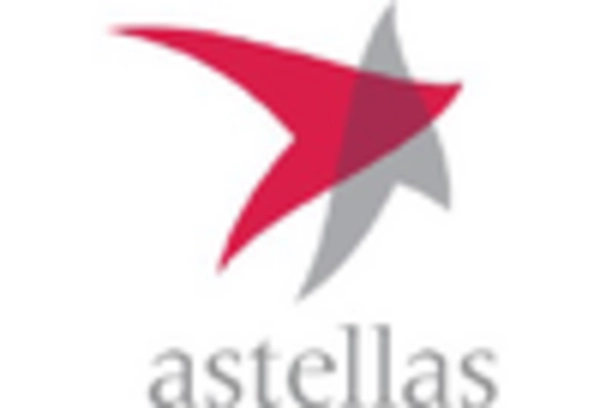Growing Geriatric Population
India's demographic shift towards an aging population is a significant driver for the overactive bladder-treatment market. The elderly are particularly susceptible to OAB due to age-related physiological changes and comorbidities. By 2030, it is projected that the population aged 60 years and above will reach approximately 300 million in India. This demographic trend suggests a substantial increase in the number of individuals experiencing OAB symptoms, thereby creating a larger patient base for treatment providers. As healthcare systems adapt to cater to the needs of this aging population, the demand for effective OAB management solutions is likely to rise, further propelling the growth of the overactive bladder-treatment market.
Rising Healthcare Expenditure
The increase in healthcare expenditure in India is a pivotal driver for the overactive bladder market. As the government and private sectors invest more in healthcare infrastructure and services, access to treatment options for OAB is improving. Reports indicate that healthcare spending in India is expected to reach approximately $370 billion by 2025. This financial commitment is likely to enhance the availability of medications, therapies, and specialized care for patients suffering from OAB. Moreover, as more individuals gain access to healthcare services, the likelihood of early diagnosis and treatment increases, which could lead to a larger market for overactive bladder management solutions.
Increased Focus on Urological Health
There is a growing emphasis on urological health in India, which is positively impacting the overactive bladder-treatment market. Public health campaigns and educational initiatives are increasingly addressing urological disorders, including OAB. This heightened focus is encouraging individuals to seek medical advice and treatment for their symptoms, which may have previously been overlooked due to stigma or lack of awareness. As healthcare providers prioritize urological health, the availability of specialized clinics and treatment options is likely to expand. This trend not only raises awareness but also fosters a supportive environment for patients, ultimately driving growth in the overactive bladder-treatment market.
Advancements in Pharmaceutical Research
Innovations in pharmaceutical research are significantly influencing the overactive bladder-treatment market. The development of new drug formulations and delivery systems has enhanced treatment efficacy and patient compliance. For instance, the introduction of extended-release formulations allows for less frequent dosing, which may improve adherence among patients. Furthermore, ongoing clinical trials are exploring novel therapeutic agents that target specific pathways involved in bladder control. As these advancements progress, they are likely to expand the range of available treatment options, thereby attracting more patients to seek help for their OAB symptoms. This dynamic environment in pharmaceutical research is expected to drive the growth of the overactive bladder-treatment market in India.
Increasing Prevalence of Overactive Bladder
The rising incidence of overactive bladder (OAB) in India is a crucial driver for the overactive bladder market. Studies indicate that approximately 16% of the adult population in India experiences symptoms of OAB, which translates to millions of individuals seeking effective treatment options. This growing prevalence is likely to increase demand for various therapeutic interventions, including medications and lifestyle modifications. As awareness about OAB symptoms and their impact on quality of life expands, more patients are likely to consult healthcare professionals. Consequently, this trend is expected to stimulate growth in the overactive bladder-treatment market, as pharmaceutical companies and healthcare providers respond to the increasing need for effective management solutions.

















Leave a Comment